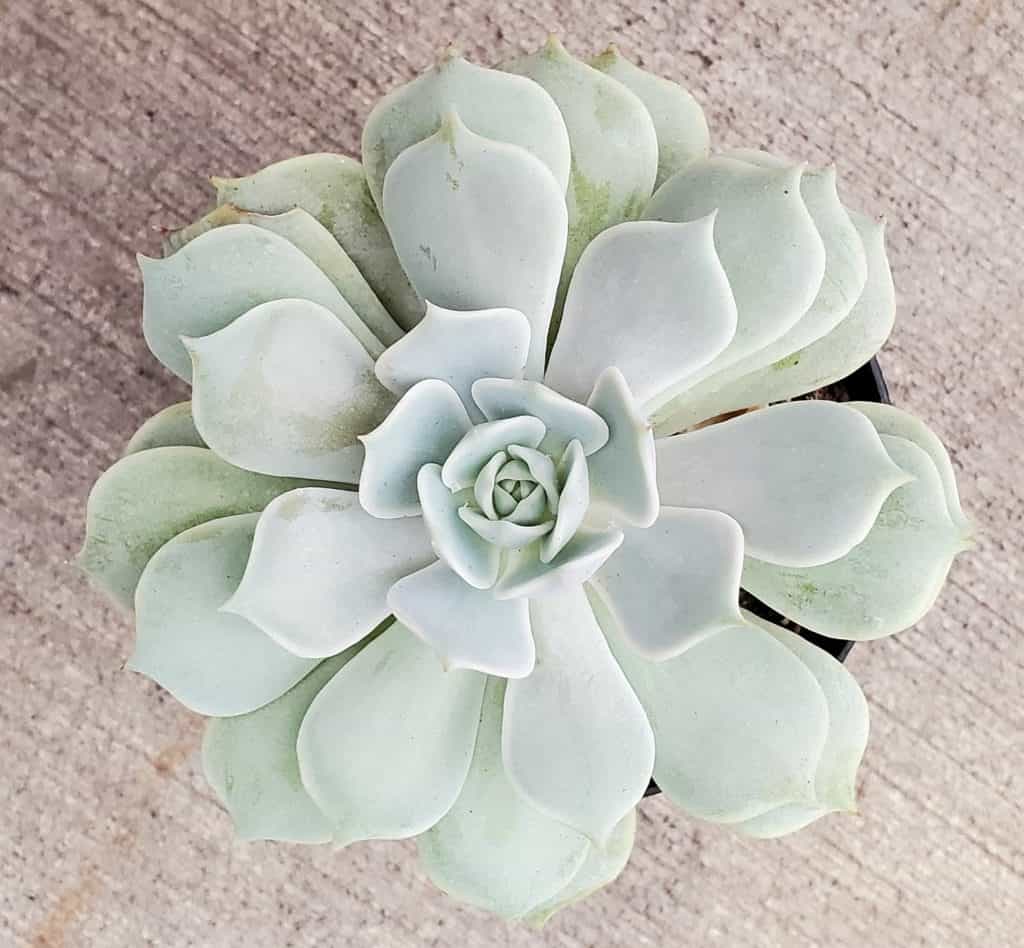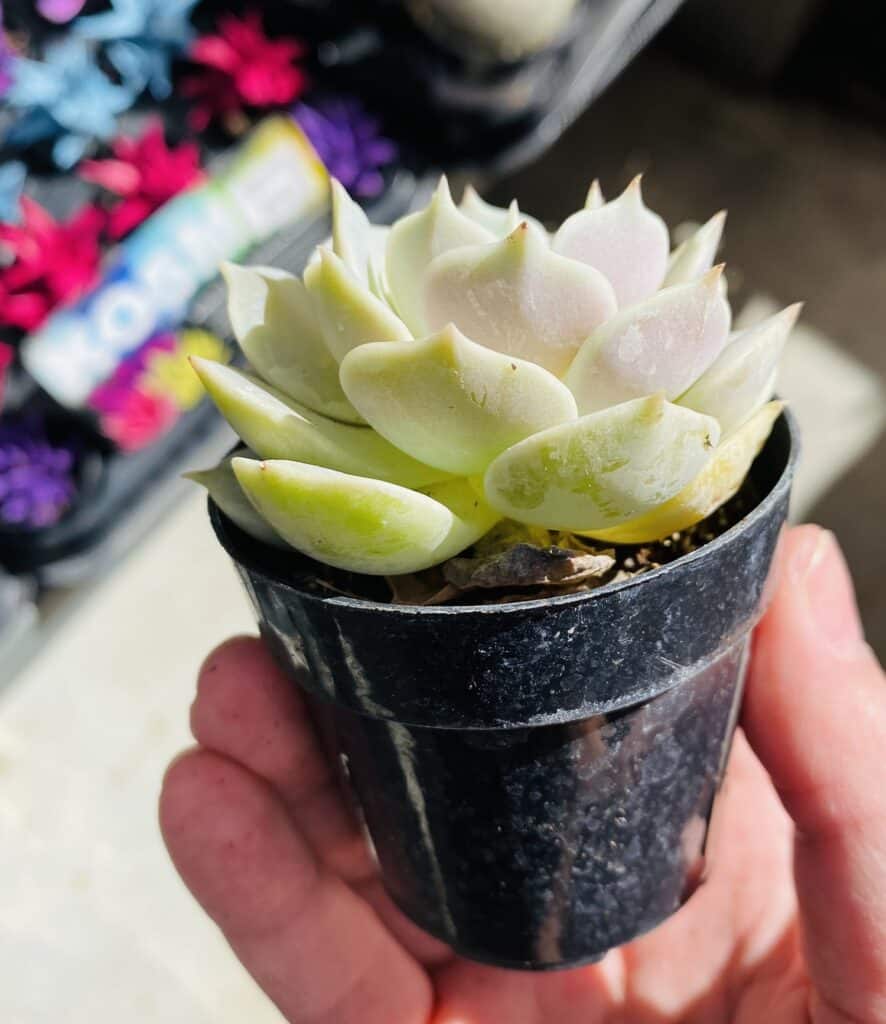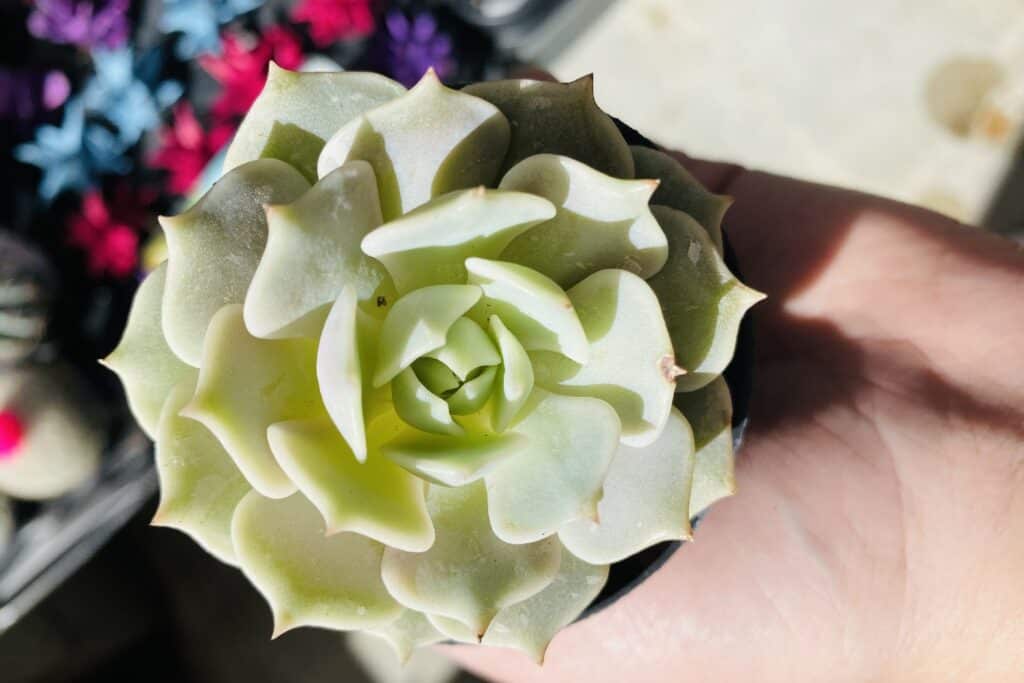Echeveria ‘Lola’ – Information & Complete Care Guide
I absolutely love shopping online for succulents and gardening supplies. If you aren't already saving money by comparing prices online, give it a try! Here are six of my favorite things that I have purchased online as I build my own succulent oasis:
I remember seeing the ‘Lola’ Succulent for the first time in person. It is a stunning succulent with amazing colors, making it the perfect addition to any succulent garden or arrangement.
If you are searching for the perfect succulent for your personal collection or for a friend, I would highly recommend the ‘Lola’. It is always the first choice for many succulent lovers because of its small size, lovely rosette shape, and ease of care.
While searching for a low-maintenance succulent to gift to a friend who is a new plant mom, I found this little gem to be an ideal choice. Caring for an Echeveria ‘Lola’ succulent is easy and rewarding! This adorable little plant is a drought-tolerant, low-maintenance succulent that can make a wonderful addition to any home.
Scientific Name
Echeveria ‘Lola’
Common Name
Echeveria Lola, Lola Succulent, Mexican Hen and Chicks
Related: Types of Succulents with Pictures
Physical Description of Echeveria ‘Lola’

The Echeveria ‘Lola’ is a small, compact succulent that forms an attractive rosette of spoon-shaped leaves. It can grow up to 6 inches wide and 4 to 6 inches tall. Unlike most other succulents that have green leaves, Lola’s leaves are a beautiful, light purple to a mix of gray and blue-green hues.
The leaves of the Lola Succulent have a thick, fleshy texture and are coated with a thick layer of white wax, called farina. This wax gives plants a natural sunscreen and raincoat that will help lessen the risk of sunburn, mold, and root rot.
In spring, the Echeveria Lola produces bright pink and yellow, bell-shaped blooms on tall flowering stems.
Related: Gorgeous Succulents With Pink Flowers
Growing Season of Echeveria ‘Lola’
The Echeveria ‘Lola’ is a warm-season succulent and its active growth period is during the summer months. It loves warm weather and will not survive a frost, so if you are planting it outdoors make sure to bring it inside in the fall.
The ‘Lola’ succulent prefers temperatures between 65-75°F (18-24°C). During the winter months, its growth slows down significantly and it will enter a dormant period.
How to Care for Echeveria ‘Lola’

Taking care of your succulent doesn’t have to be a challenging task! Below, I’ve provided some helpful tips that will make it easy. If you want further information on this topic, just click the links below for my comprehensive guides.
Watering Needs of Echeveria ‘Lola’
When it comes to watering, this succulent is very easygoing. It needs only minimal watering, as overwatering will cause root rot. To ensure adequate hydration, water your ‘Lola’ thoroughly once the soil has dried out completely. Let the excess water drain away before returning the plant to its pot or container.
Remember, a little water goes a long way, so don’t worry if you’re not watering it too frequently! As this succulent is slow growing, the minimal amount of water should not affect its overall growth.
Related: Fast-Growing Succulents for Lush Windowsills and Gardens
Sunlight Needs of Echeveria ‘Lola’
When it comes to providing the best lighting conditions for this succulent, ‘Lola’ will need full sun to partial shade. The afternoon sun is ideal as it helps brighten up the colors of its leaves and encourages blooms.
It’s best to avoid direct sunlight during midday because that can cause sunburn and dehydration. If you are keeping this plant indoors, the same light requirements are necessary to help it thrive. Make sure it is in a spot that gets plenty of bright, indirect light.
When growing succulents indoors, it can be hard to provide all the sunlight it needs. If you notice your Lola Succulent is not getting enough sun, you can supplement it with an LED plant grow light.
Soil Needs of Echeveria ‘Lola’
The Echeveria ‘Lola’ needs a well-draining succulent and cactus soil, which can be found in most stores’ plant care sections. You could also make your own mix by combining potting soil, perlite, and coarse sand.
Consider adding a succulent fertilizer or some worm castings to the soil to provide extra nutrients for the plant. This will help it grow healthy and strong.
When it comes to potting, make sure you use a container with drainage holes so that the excess water can drain away from the roots. This will also help to avoid root rot.
Propagation Methods of Echeveria ‘Lola’
Echeveria ‘Lola’ is a great plant to propagate by leaf and stem cuttings.
For leaf propagation, carefully remove the leaves from the stem (a gentle twist should work) with the complete leaf intact. No part of the leaf should be left behind on the stem. Give the removed leaves 48 hours to develop calluses before placing them on top of moistened potting soil.
The same process applies to stem propagation. Make a clean stem cut, then give it time to callous before planting it in soil.
Alternatively, you can also propagate when your plant grows little offsets at its base. You can either leave these to grow or carefully cut them and plant them into their own pot. Patience is key to successful propagation, as it may take a few weeks before the roots begin to form and new plants start growing.
Related: Surprising Ways to Get Free Succulents
Troubleshooting Echeveria ‘Lola’

Troubleshooting the health of your Echeveria ‘Lola’ can be tricky, but with some knowledge and observation, you can spot potential problems early on and take action to correct them.
Common signs of an unhealthy succulent, such as Lola, include yellowing or discolored leaves, which could indicate either overwatering or a lack of sunlight. To avoid this, make sure your plant gets enough sunlight and water it only when the soil is dry completely.
Another common problem with succulents is mealybugs and other pests. If you spot any white fluff on the leaves or see small insects crawling around, take action immediately! Dilute rubbing alcohol or dish soap in water to make a solution, and spray it on the affected areas. I have found it best to move any of my plants with pests to a location separate from my other plants, to avoid the spread of bugs from one plant to another.
Finally, when caring for your Echeveria ‘Lola’, make sure to keep it away from extreme temperatures. Hot drafts, cold winds, and frost can irreparably damage your plant. Be sure to keep your echeveria in an area with a mild and consistent temperature.
Related: How to Start a Greenhouse for Succulents
Echeveria ‘Lola’ in Review
I love the versatility of Lola Echeveria, and I know you will find unique ways to incorporate this succulent into your home.
It’s such an eye-catching plant that is perfect for adding interest to both indoor and outdoor gardens or moss art pieces like a succulent pumpkin planter. It is also a popular choice for floral bouquets or wedding arrangements due to its rosette shape and romantic, pastel coloring.
If you’re looking for the perfect housewarming gift or to add some extra life and color to your own home, the Echeveria ‘Lola’ is an excellent choice. It does require a bit of maintenance and attention, but with proper care, the Echeveria ‘Lola’ will reward you with its beauty for years to come!
Related: How to Fix a Leggy or Tall Succulent
